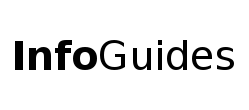
 | University Libraries
| University Libraries
Fair Use (section 107 of the U.S. Code) is the most flexible facet of U.S. Copyright law and is designed to protect the right to use copyrighted material without permission or payment for specific purposes in specific ways, especially in “criticism, comment, news reporting, teaching, scholarship, or research.”
In order to qualify as fair use, a use must pass what's called a "four factor" test. No one factor is decisive; they must all be weighed together:
What are you attempting to do with the use you are making of the copyrighted work?
This is the only factor that deals with the proposed use - all the others deal with the work being used, the source work. Purposes that favor fair use include education, scholarship, research, and news reporting, as well as criticism and commentary more generally. Non-profit purposes also favor fair use (especially when coupled with one of the other favored purposes). Commercial or for-profit purposes weigh against fair use.
Is your intended use "transformative"?
A transformative use is one that is new or unexpected. Parody, critical analysis, and critical commentary are the most easily identified forms of transformative use. Legal analysis about this kind of transformative use often engages with free speech issues.
Has the work you wish to use been published already?
It is less likely to be fair to use elements of an unpublished work - making someone else's work public when they chose not to is not very fair. Nevertheless, it is possible for use of unpublished materials to be legally fair.
Is the work you wish to use more "factual" or more "creative"?
Borrowing from a factual work is more likely to be fair than borrowing from a creative work. This is related to the fact that copyright does not protect facts and data.
How much are you using relative to the whole?
A use is usually more in favor of fair use if it uses a smaller amount of the source work, and usually more likely to weigh against fair use if it uses a larger amount. But the amount is proportional. So a quote of 250 words from a 300-word poem might be less fair than a quote of 250 words from a many-thousand-word article.
As a general rule, one should use no more than is necessary to illustrate one's point.
How substantial is what you are using?
The closer what you are using is to the "heart" of the work, the less fair the use. The more peripheral, the more fair the use.
Follow best practice guidelines of relevant disciplinary stakeholder group
Many groups have collaborated to document consensus opinion regarding best practice around fair use in specific disciplines. These guides are available through the Center for Media & Social Impact
Is the use in question substituting for a sale the source’s owner would otherwise make - either to the person making the proposed use, or to others? Generally speaking, where markets exist or are developing, courts tend to favor them. Nevertheless, it is possible for a use to be fair even when it causes market harm.
To help you assess whether your proposed use of copyrighted material is a fair use, complete the online form provided by the Fair Use Evaluator tool. Print out and keep a copy of this time-stamped record, in the event you are asked by a copyright owner or a court of law how you arrived at your decision.
Ask a Librarian | Hours & Directions | Mason Libraries Home
Copyright © George Mason University